Welcome to the public beta of Reader! Walkthrough guides can be really boring so we've laced ours with spicy memes to keep those dopamine receptors firing while we subliminally demonstrate the basics of our software. We hope you don't mind a little fun.
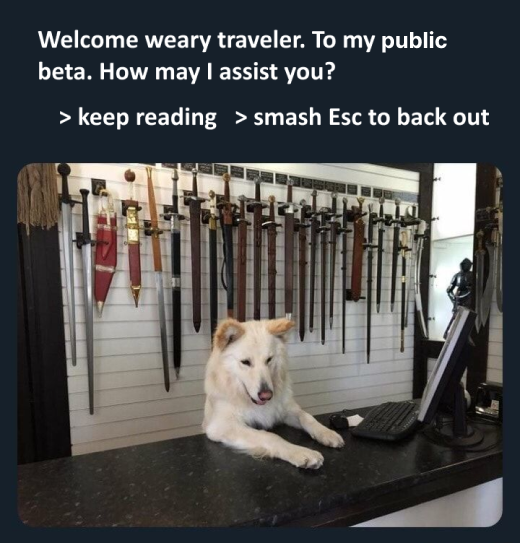
Keyboard shortcuts ⌨️
The first thing you should know is that Reader is productivity software built with power users in mind. This means you can do almost everything with your keyboard. You can even read, highlight, and annotate without touching the mouse!
Try using the ↑ and ↓ arrow keys to move the purple focus indicator.
Now try focusing the animated gif of Antonio Banderas below and tapping h to highlight the focused paragraph.

That's right: you can finally highlight images! And those highlighted images, like all highlights in Reader, will be synced with and resurfaced in Readwise and/or your note-taking app of choice.
You can always hit z to undo any action in Reader enabling you to move quickly without fear of making mistakes. This undo has memory so you can undo several steps in reverse.
Those left and right sidebars in this reading view (the table of contents and context panel, respectively) are cool at the beginning of the document, but interfere once you truly begin a focused reading session. Try tapping [ and/or ] to hide them.
Now try tapping n to both highlight and start a note on the focused paragraph. When the side panels are hidden, those annotations will appear as beautiful marginalia.
There are lots more keyboard shortcuts than these. You can typically discover them by hovering the action with your mouse pointer, pulling open the Command Palette (Cmd/Ctrl + K), or tapping ? for the quick reference.
Let's keep going.
Supported document types 📃
You can save documents of all kinds to Reader including web articles, RSS feeds, email newsletters, PDFs, EPUBs, Twitter threads, Twitter Lists, and YouTube videos, bringing all your reading into one place.
The best way to learn how to get these different documents into Reader is just to explore the built-in category views alongside the left sidebar. Each view will contain a bespoke set of instructions on how to work with that particular content type, such as the example below explaining how to get web articles into Reader.
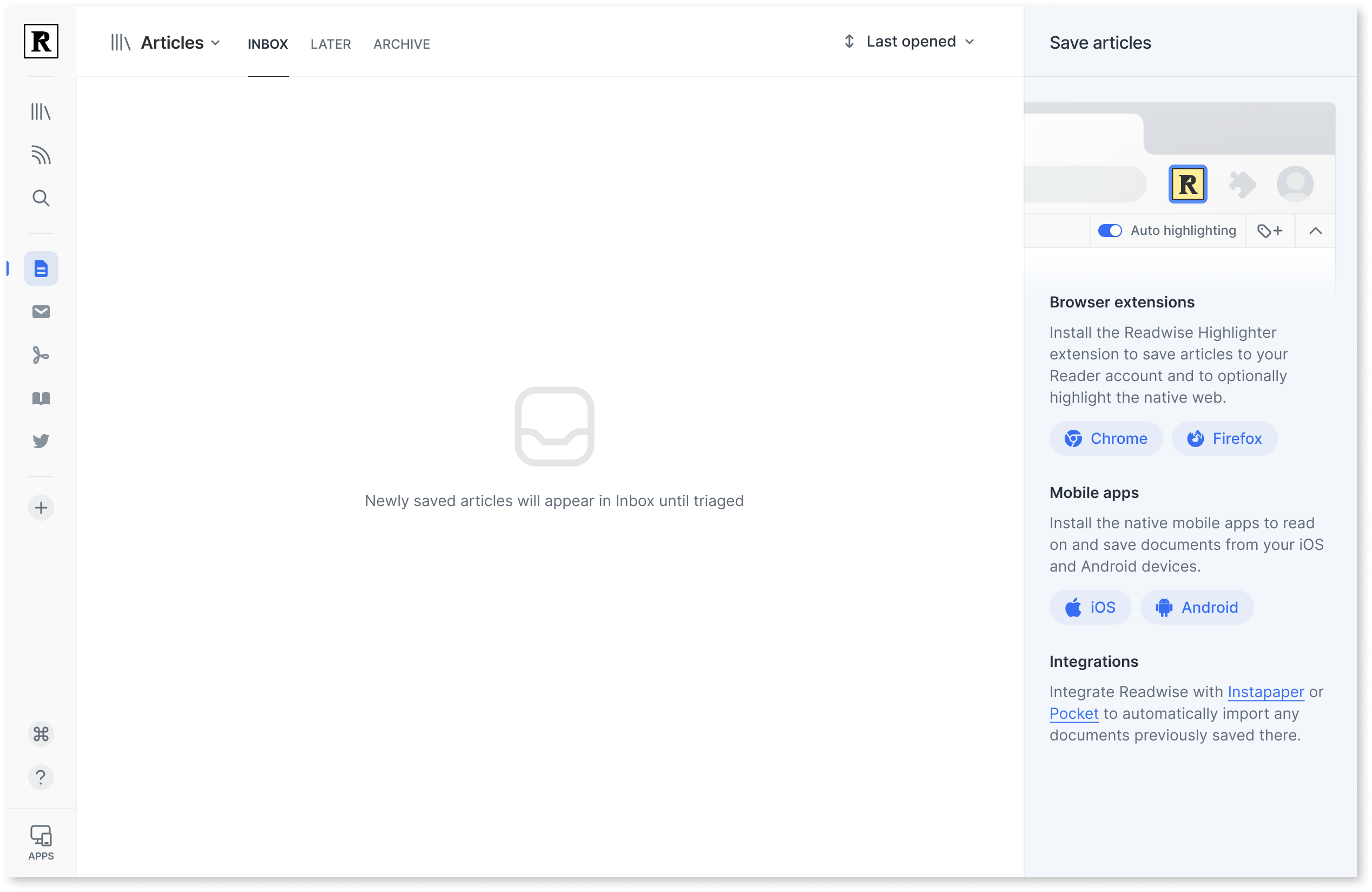
Browser extension 🌐
No matter what, one of the first things you should do is install either the Chrome or Firefox browser extension for Reader and pin it to the address bar. Whenever you're on an article you want to read, tap the yellow extension icon to save it to Reader.
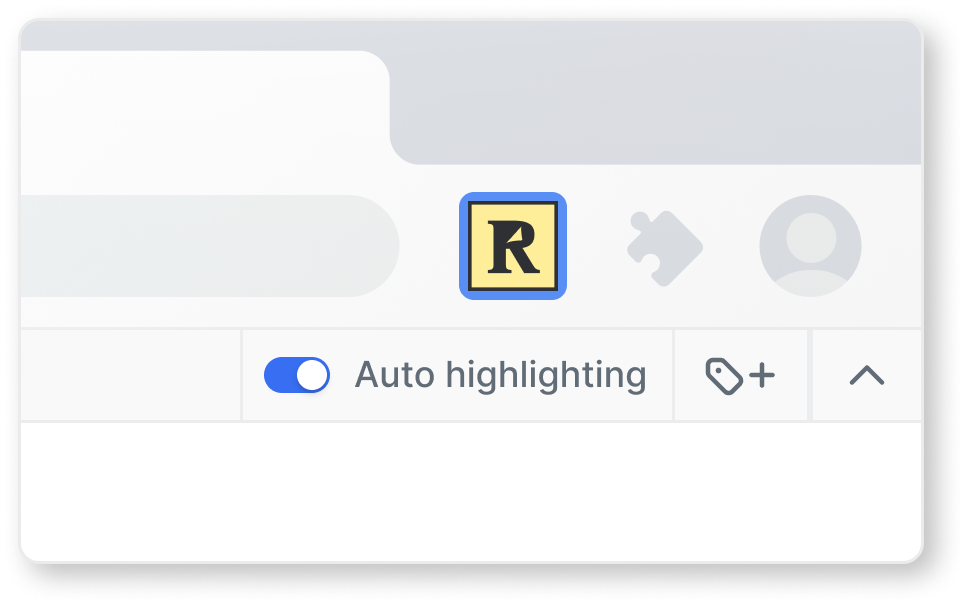
In addition to saving documents to Reader, just like you would with Instapaper or Pocket, this new browser extension has one massive bonus feature.
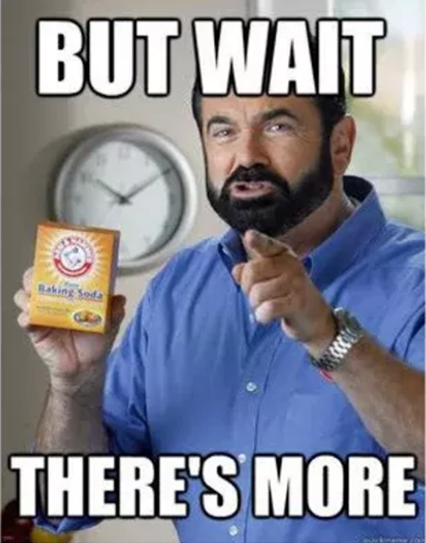
It's also a web highlighter.

This means you can optionally highlight the native web page, just like with Hypothes.is or Liner. And those highlights will bidirectionally sync with the Reader web and mobile apps.

Why might you use the web highlighter instead of the Reader apps? A couple reasons:
-
First, although we generally prefer our clean, distraction-free reading experience, there are some exceptions where the original site is more pleasing. In these cases, you can honor the OP and read as they intended.
-
Second, although our parsing already exceeds Instapaper and Pocket in our benchmark tests, we'll never be able to parse 100% of the internet, 100% perfectly. HTML and CSS are just too flexible. The web highlighter is our exception handler.
-
Third, sometimes you find yourself reading an article and want to take a highlight but not break your flow. Just activate the highlighter, make your highlight, and keep reading.
Those 18.82% of you reading this in your Safari browser might be wondering if you can install the extension too.
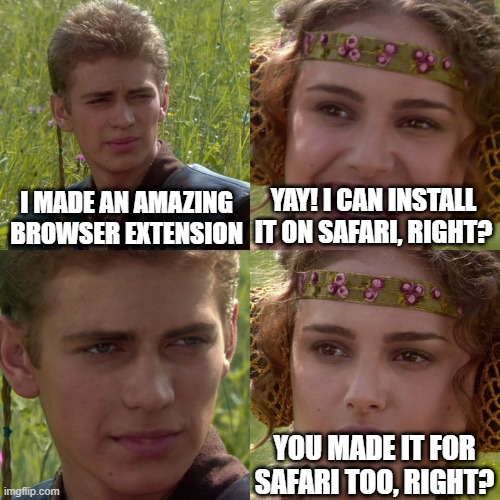
Jk... We now do have a Safari extension but Apple sure doesn't make it easy 🙂
Mobile apps 📱
In addition to installing the browser extension, one of the other first things you should do is install the iOS app or Android app.
The mobile app should be fairly self-explanatory if you understand this web app, but here are a couple pro tips.

Double tap to highlight. The mobile analog of using the keyboard shortcut h to highlight an entire paragraph is double tapping. If you're reading this on mobile, try double tapping this paragraph. It's awesome.
Text to speech. In addition to reading with your eyes, you can also listen with your ears to any document read aloud with a human-sounding, ✨AI✨-generated voice. In the mobile app, tap the Listen button in the heading of any document (except for PDFs, which are different).
Long and short swipes. In the list views, you can action individual items using both left and right and short and long swipes. The long swipes change based on your context, but below are the actions when in your Inbox. You can customize these on the Settings page.
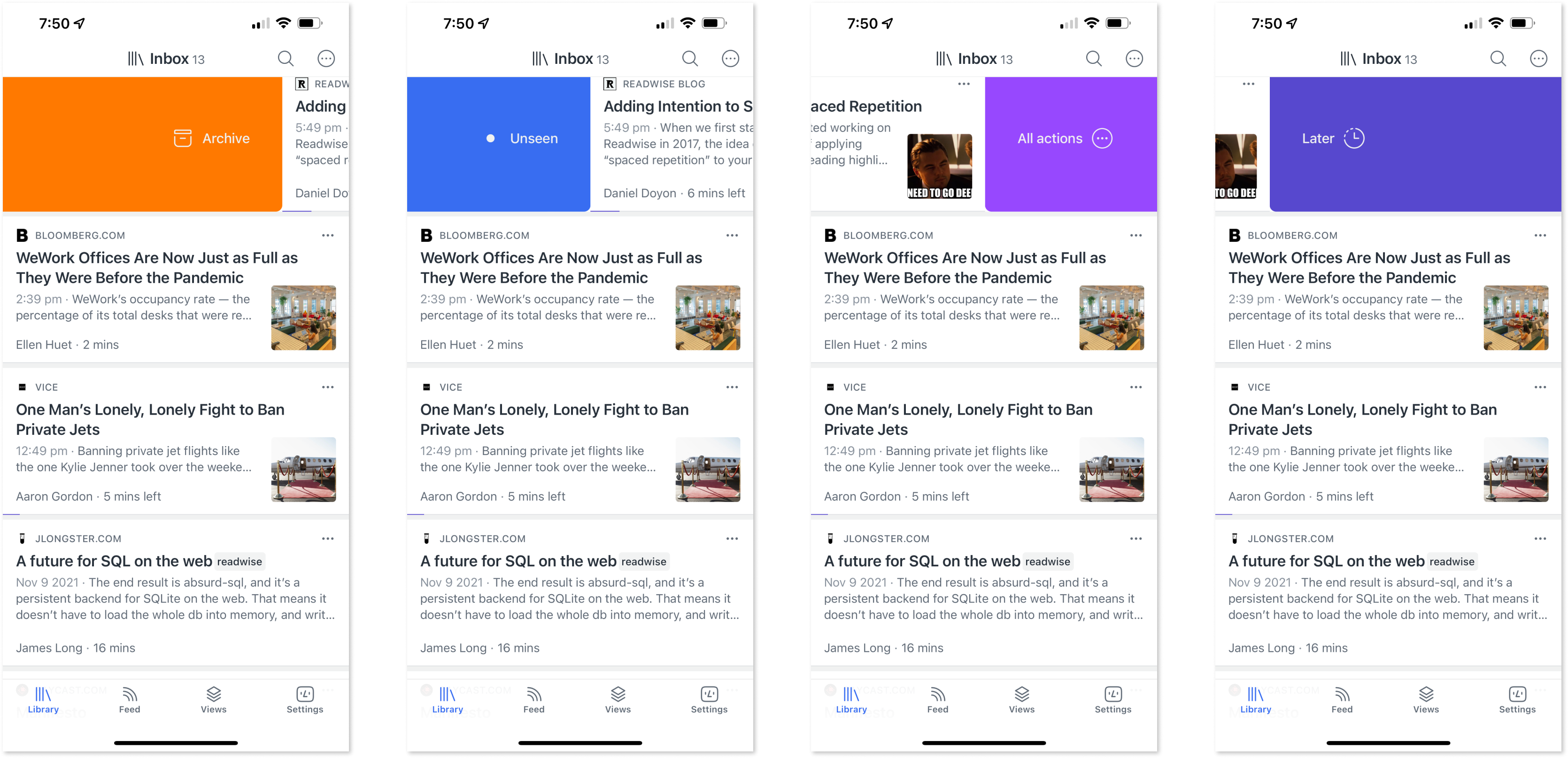
Text-to-speech 🗣️
Even though we already mentioned text-to-speech (TTS) in the section above, this is such a powerful feature that it deserves its own section.
When we first shared that we were developing TTS, we were surprised by how bimodal interest in the feature was. Some beta testers rated TTS as the most important feature we could be working on whereas others wrote into us with messages like "I don't understand this. I wish you would prioritize other things."
Believe it or not, some of us on the Readwise team fell into the latter camp. We identify as readers, after all, not listeners. That said, all of us have completely come around.
If you're a TTS skeptic, allow us to share what we've discovered:
First, hands-free TTS listening is particularly well-suited for consuming low information density content. If you've got a bunch of ~5 minute news articles and press releases sitting in your queue, you might try listening to them on your next walk, drive, bike ride, dishwashing, et cetera.
Second, our implementation of TTS includes accurate word mapping enabling a form of reading sometimes referred to as immersion reading. This refers to simultaneously reading and listening to the same document. It's a kind of sensory deprivation technique enabling you to quickly ramp into a flow state which would otherwise take 15 to 20 minutes of focused reading to attain. This is clearly anecdotal, but you might give it a shot to see how you like it.
YouTube highlighting 🎥
Another feature that might seem out of place in a product called Reader, but is very much worth mentioning here is highlighting YouTube videos. Ultimately, Readwise is about betterment and YouTube has evolved into perhaps the best learning content platform in existence. Yet until now, there weren't many digital solutions to capture ideas and take notes while you watch.

In Reader, you can watch a YouTube video alongside its time-synced transcript, and take notes and highlights as it plays. You can also precisely navigate the video by clicking any fragment, clicking a highlight in the right sidebar, or using special keyboard controls.
Library versus Feed ❓
As you start using Reader, you'll notice there are two broad "sections" for your documents: Library and Feed. You might then wonder, why two sections? Why not just one?

Think of the Library section as your permanent archive of digital documents: a place of high signal and low noise. Library is where documents that you manually save for yourself, such as clipping an article with the browser extension, reside. These documents can then be managed through the triage statuses of Inbox (for newly saved documents), Later (for documents you intend to read but don't have time right now), and Archive (for documents you're finished with at the moment).
The Feed section, on the other hand, is where documents that are automatically "pushed" to you by others, such as RSS subscriptions and email newsletters, initially reside: a place of low signal and high noise. You can, of course, save something from Feed to Library for safekeeping, but this is an intentional choice.
Thank you 🙏
There's more to Reader than we touched on here, such as tagging, filtering, and full-text search, but we'll leave you to discover those features on your own. Instead, we thank you for making it through this guide and not being this guy.
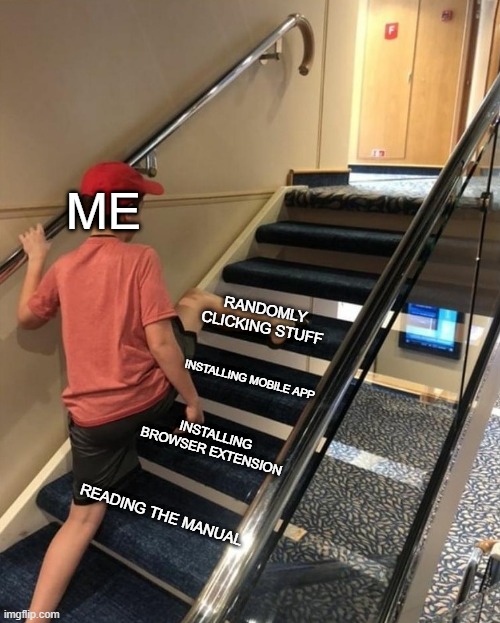
In all seriousness though, we genuinely appreciate your patience while we've been working out the kinks of this ambitious piece of software. We still have sooo much to build, but we hope it's at least now in a place where you can start getting value.
Speaking of having so much to build, we want you to know that Reader is a constant work in progress. We're updating it literally every day based on feedback from users like yourself. If something seems missing, it's probably because we haven't gotten a chance to build it yet.
If you have a question, or if there's something you want added, or if something is confusing, or if something is annoying, or if you snag a bug, we've built a handy in-app feedback feature. We typically respond to each and every piece of feedback we can.
Try it now by opening the Command Palette (Cmd/Ctrl + K), starting to type "feedback", selecting the category that seems right for what you want to share, and saying something like “hello!”
Or perhaps real feedback, if you have any, as shown below:
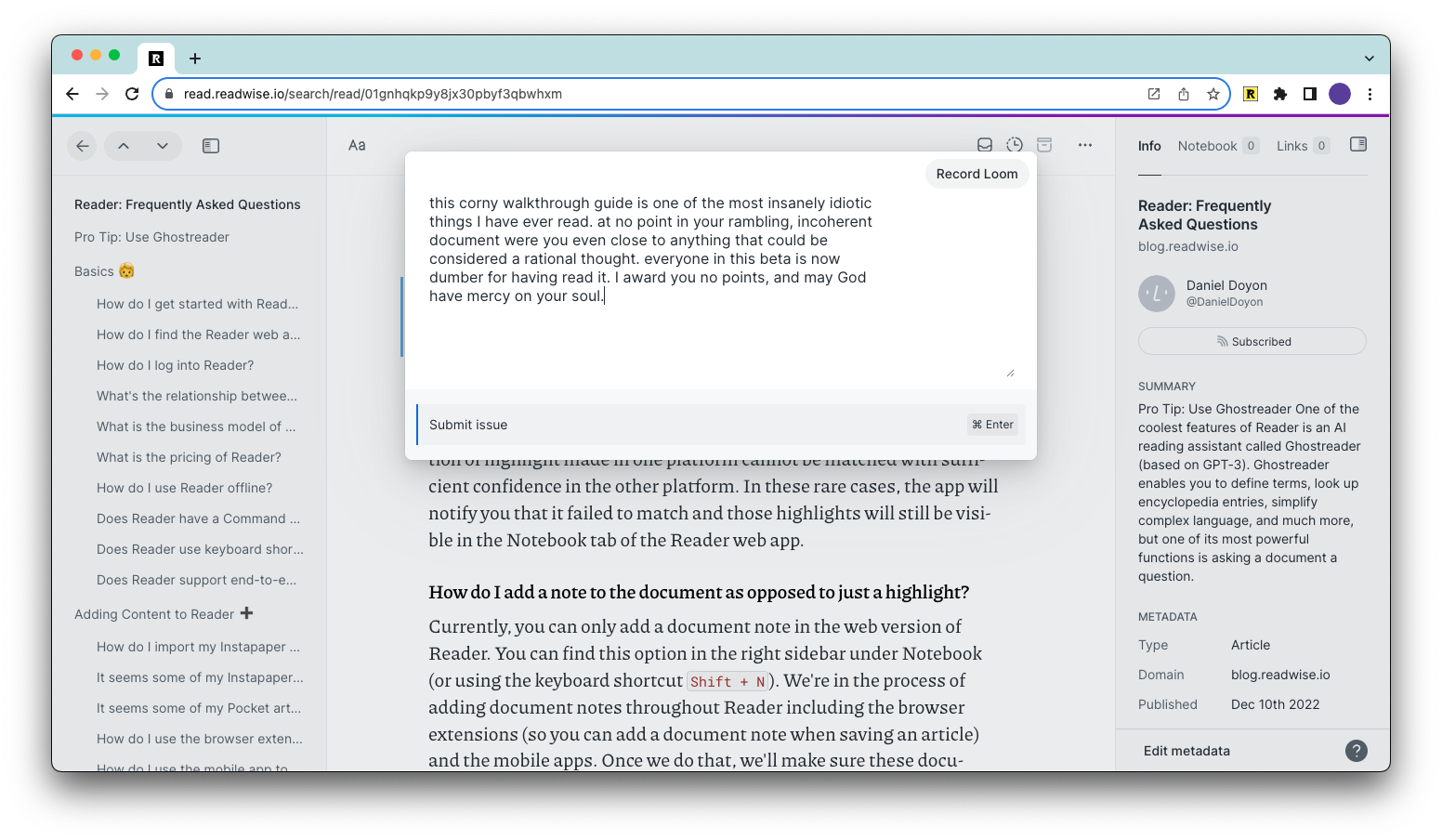
You'll probably hear from someone on our team shortly.
Happy reading! 🤓
P.S. If you like help documentation, you should find an FAQ in your Reader account if you search!
P.P.S. If you like walkthrough videos, our community manager Erin has made some amazing tutorials including: Reader 101 (Getting Started), Reader 201 (Feed), and Reader 202 (Filtering).